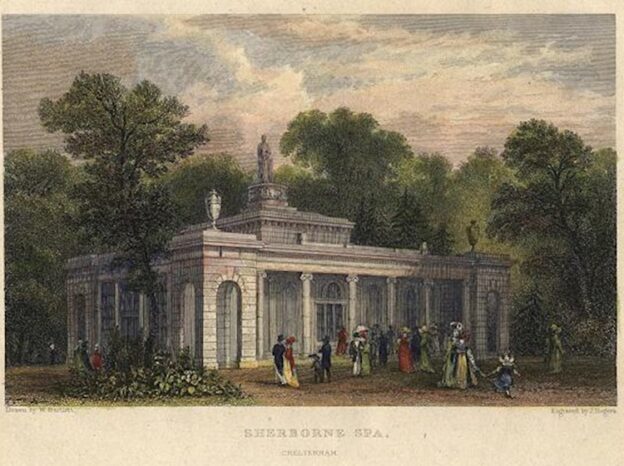Learn about the discovery of the Spa Waters at Cheltenham, and the impact it had, in my short article.
The Discovery of the Spa Waters (1716):
Initial Discovery:
The story goes that in 1716, local pigeons were observed pecking at salt deposits in a field. Upon further investigation, it was found that these deposits were associated with a mineral spring. The man who made this discovery was William Mason, whose observations led to the realization that the waters had health benefits.
Rise of the Spa Town:
Once the medicinal properties of the waters were recognized, Cheltenham started to attract visitors looking for health remedies. Initially, the waters were believed to be beneficial for digestive issues. The early 18th century saw a surge in the popularity of spa treatments across England, and Cheltenham was well-placed to capitalize on this trend.
Expansion and Development:
The influx of visitors led to rapid infrastructural and architectural developments in the town. To accommodate the growing number of visitors, lodging houses, pump rooms, and assembly rooms began to emerge. The Montpellier district of Cheltenham, in particular, saw significant development during this period, with the establishment of the Montpellier Spa in 1801.
Promotion and Patronage:
The spa waters of Cheltenham received a significant boost in popularity when King George III visited the town in 1788 to take the waters. His visit provided a royal endorsement, which further elevated the town’s status as a leading spa destination. Cheltenham began to be referred to as “The Western Spa of England.”
Cultural Flourishing:
With the town’s rising prominence as a spa resort, Cheltenham also became a hub for cultural activities. Music, art, and literature thrived, attracting both artists and aficionados. Regular concerts, balls, and social gatherings became a staple of life in Cheltenham.
Shift in Perception:
By the early 19th century, the concept of the spa town had transformed. While initially, people visited primarily for the health benefits of the waters, over time, these visits became as much about leisure and socialization. Cheltenham’s elegant Regency architecture, gardens, and promenades made it an attractive destination not just for health but also for relaxation and entertainment.
Conclusion:
The discovery of the spa waters in 1716 catalyzed Cheltenham’s transformation from a modest market town to one of England’s premier spa destinations. This period saw significant architectural, cultural, and social changes, laying the foundation for the town’s future growth and prominence. While the allure of spa treatments might have waned over the centuries, the legacy of this era continues to shape Cheltenham’s identity even today.
